Spectrophotometer PCE-CSM 31
Table Spectrophotometer / Touchscreen /
simple user interface / memory for up to 5000 measurements /
evaluation via the PC with USB connection / location function / Bluetooth
General Information about the Spectrophotometer
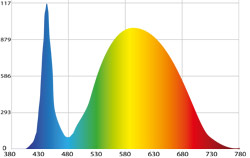
The Spectrophotometer from PCE Instruments is a colorimeter for the determination of colours and spectral reflection curves in the range from visible to UV wavelength range. The table spectrophotometer has 2 measurement geometries d / 8 and d / 0 which enables transmission and reflection measurements of solid, liquid or granular samples. Thus, with the help of the table spectral photometers, the colour coordinates in common colour spaces such as Lab, LCh or XYZ can be measured and the colour differences such as DeltaEab or DeltaEcmc can be determined. In addition, colour indexes such as whiteness, yellowness, or opacity can also be determined. In addition, the spectrophotometer is suitable for recording the spectral reflectance curves in the range between 360 … 780 nm. The determined measurement values can be stored on the internal memory of the spectrophotometer or read out by means of the supplied software. The table spectrophotometer is operated via a large touch display and also has a camera function which makes the positioning of small measuring objects within the measuring aperture much easier.
Spectrophotometers are used to determine the colour coordinates and remission values for determining the colour location and spectral reflection curves. For this purpose, the coloured surfaces are illuminated by means of a defined light source through the spectrophotometer. At the same time, the reflections (in the case of opaque surfaces) and transmissions (in the case of transparent and translucent surfaces) are measured and separated due to the spectrophotometry into narrow, few nanometre-wide spectral bands in the visible range from IR to UV. Thus, a colour fingerprint, that within the scope of colour specifications, quality assurance and communication, guarantees the consistency over the entire product life cycle, can be determined for almost every surface.
Measurement Geometry
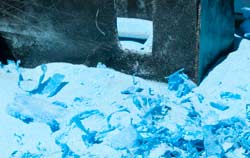
An important parameter in every spectrophotometer is the measuring geometry. Depending on the application, different measuring geometries make sense. The measurement geometry describes the alignment of the emitting light source of the table spectrophotometer to the surface of the measurement object as well as the alignment of the sensor to the reflective surface of the measurement object. The selection of the correct or incorrect measuring geometry can significantly influence the measurement results and lead to interpretation errors during the communication between the customers and / or the suppliers. Since the measurement geometry cannot be subsequently changed or adjusted, it should be clarified before purchasing a spectrophotometer. The known geometries are e.g. d / 8, d / 0 or 45/0. The d / 8 measurement geometry, also referred to as spherical geometry, produces diffused light, thereby reducing the effect of the surface texture in terms of gloss and roughness. With this geometry, the spectrophotometer can look into the colour, figuratively speaking. Some table spectrophotometers with this geometry also have an optical gloss trap (SCI; SCE) in order to bring the gloss effect in the measurement or not. As against to it, a spectrophotometer with a 45/0 measurement geometry produces a directional reflection that corresponds more to a human perception. Therefore, it makes sense to use the 45/0 geometry when the visual impression an object makes on a person should be imitated.
Light Type
Also important is the choice of light. The use of different types of light can change the perception of the colour impressions. The CIE has therefore established the standard illuminants with defined spectral emission in order to provide comparability. The choice of the type of light applied should correspond to the later field of application of the product. Widely used is the standard illuminant D65. D65 simulates daylight with UV components at the colour temperature of approx. 6500 Kelvin. The standard illuminant C also stands for daylight, but without UV components at a colour temperature of approx. 6770 Kelvin. The illuminant F11 or TL84 is also referred to as department store light at 4000 Kelvin and is suitable when the products are placed under the artificial light. In addition to these types of light, there are many other narrow to broadband standard types of light. Each spectrophotometer offers the possibility to select the appropriate types of light.
Differences between Spectrophotometer and Colorimeter
Colorimeters work according to the tristimulus absorption and depict human eyesight. In the human eye, three basic colours red, green and blue are recorded, colorimeters imitate this colour perception by means of 3 colour sensors with comparable spectral sensitivity in the ranges of red, green and blue. The colour values determined in this way are presented by the measuring instruments as X, Y and Z values on the display, the conversion into common colour spaces such as CIELab or RGB is carried out by most devices automatically.
Although spectrophotometers work according to the same basic principle, the main difference to the colorimeters lies in the sensitivity and the number of sensors. Depending on the quality of the colorimeter, significantly more sensors are installed in spectrometers, so that the devices have a wavelength-specific sensitivity in the single-digit nanometre range. Thus, not only the colour coordinates be determined, but also the spectral distribution and intensity can be determined and displayed much more accurately. Likewise, spectrophotometers can measure opacity or detect metamerism. In case of this phenomenon, for example, two different objects under one light source appear to be of the same colour, but, however, under another light source distinct colour differences are visible. The reason, why the majority of different spectral reflection properties of the surfaces are triggered, is the use of different pigments.
For this reason, spectrophotometers are preferably used in research and development as well as whenever colour and colour spectra need to be determined very accurately. For the use in the production process, the incoming and outgoing inspection, as well as in the quality control, the colour-comparison measurements with the simple representation of the colour differences and DeltaE values, carried out with the help of the colorimeters, are usually sufficient.
| Recording geometry | Reflection: 8° / d, (SCI and SCE, including UV / exclusive UV) |
| Permeability: 0° / d, (SCI and SCE, including UV / exclusive UV) | |
| Size of integration sphere | 154 mm / 6 in |
| Spectrophotometric operation | Concave grid |
| Sensor | 256 Pixel CMOS image sensor |
| Wavelength interval | 10 nm |
| Wavelength spacing | 10 nm |
| Measured reflection range | 0 … 200% |
| Colorimetric index | WI (ASTM E313, CIE/ISO, AATCC, Hunter) |
| YI (ASTM D1925, ASTM 313) | |
| TI (ASTM E313, CIE/ISO) | |
| MI (Metamerism Index) | |
| Stain fastness, colour fastness, colour intensity, opacity | |
| Gardner Index, Pt-Co Index, 555 Index | |
| Specular component | SCI, SCE |
| Colour ranges | CIE Lab, XYZ, Yxy, LCh, CIE LUV, Hunter LAB |
| Munsell, s-RGB, HunterLab, DIN, βxy | |
| Formulas for colour inequality | ΔE*ab, ΔE*uv, ΔE*94, ΔE*cmc(2:1), ΔE*cmc(1:1) |
| ΔE*00v, ΔE(Hunter), DIN ΔE99 | |
| Light source | D65, A, C, UV, D50, D55, D75, F1, F2, F3 |
| F4, F5, F6, F7, F8, F9, F10, F11, F12 | |
| Viewing angle | 2° / 10° |
| Data display | Spectrogram values, Samples of colour values |
| Values / graph of colour differences | |
| Pass / Fail result, Colour balance | |
| Device error | Φ 25.4 mm / SCI, ΔE* ab 0.15 |
| Measurement mode | Single measurement, average value measurement |
| Location method | Finding the measuring points by camera |
| Power supply | Power supply input: 100 … 240 V 50 … 60 Hz 1.6 A |
| Power supply output: 24 V 3 ADC | |
| Dimensions | 370 x 300 x 200 mm / 14.5 x 11.8 x 7.8 in (W x L x H) |
| Lamp lifespan | 5 years / more than 3 million measurements |
| Display | 7″ TFT Display, capacitive Touchscreen |
| Menu languages | English, Chinese |
| Operating conditions | 0 … 40°C / 32 … 104°F |
| 0 … 85% relative humidity (non-condensing) | |
| Storage conditions | -20 … 50°C / -4 … 122°F |
| 0 … 85% relative humidity (non-condensing) | |
| Standards | CIE No.15, GB/T 3978, GB 2893, GB/T 18833 |
| ISO7724/1, ASTM E1164, DIN5033 part 7 | |
| Data storage | 5000 standards, 40000 samples |
| (One standard contains SCI and SCE) | |
| Data Interface | USB, Bluetooth |
| Weight | 16 kg / 35 lb 4 oz |
| Repeatability | |
| Spectral reflection: Φ 25.4 mm / SCI, standard deviation at 0.05% (400 nm … 700 nm: within 0.04%) | |
| Chromaticity for spectral reflection | Φ 25.4 mm / SCI, standard deviation ΔE * ab 0.01 |
| Spectral transmittance: Φ 25.4 mm / SCI, standard deviation at 0.05% (400 nm … 700 nm: within 0.04%) | |
| Chromaticity for spectral transmittance: | Φ 25.4 mm / SCI, standard deviation ΔE* ab 0.03 |
| Chromaticity accuracies refer to the white calibration standards for 30 measurements in a 5 second interval. | |
| Measuring aperture | |
| Reflective: | Φ 30 mm / Φ 25,4 mm, Φ 18 mm / Φ 15 mm Φ10 mm / Φ 8 mm, Φ 6 mm / Φ 4 mm |
| Permeable: | Φ 30 mm / Φ 25.4 mm |
| Wavelength range | 360-780 nm combined LED lamp, 400 nm cut-off, UV lamp |
เฉพาะลูกค้าที่เข้าสู่ระบบ และเคยซื้อสินค้าชิ้นนี้แล้วเท่านั้น ที่เขียนบทวิจารณ์ได้
สินค้าที่เกี่ยวข้อง
Spectrophotometer
PCE-CSM 8
Spectrophotometer
PCE-CSM 21
Spectrophotometer
PCE-CSM 30
Spectrophotometer
PCE-CSM 22
Spectrophotometer
PCE-CSM 10
Spectrophotometer
PCE-CSM 20
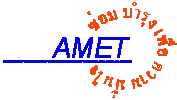
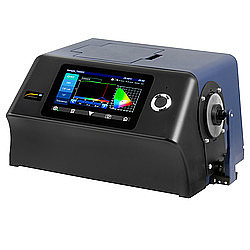
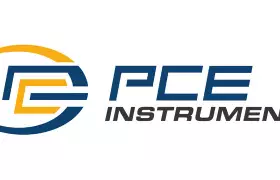

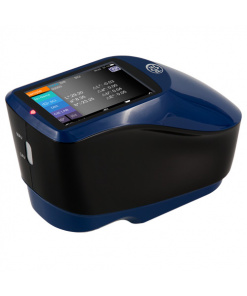
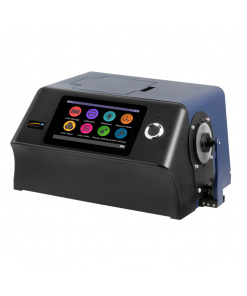
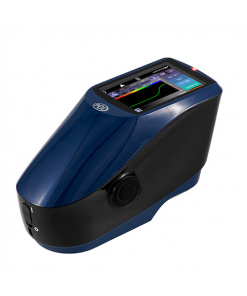

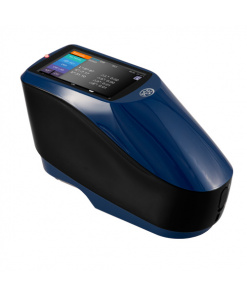
รีวิว
ยังไม่มีบทวิจารณ์